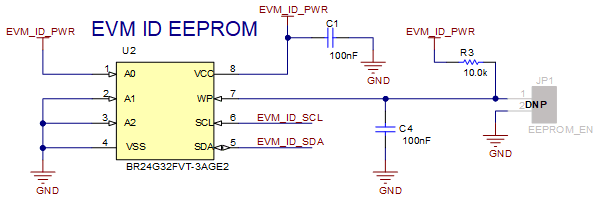SBAU351 April 2021
3.2 I2C Bus for Onboard EEPROM
The circuit shown in Figure 3-2 is used with our EVM controller (PHI), for EVM identification. This circuit is not required by the ADS127L11 for operation. The jumper (JP1) is a write protect and does not need to be changed for EVM operation.
 Figure 3-2 EEPROM for EVM ID
Figure 3-2 EEPROM for EVM ID